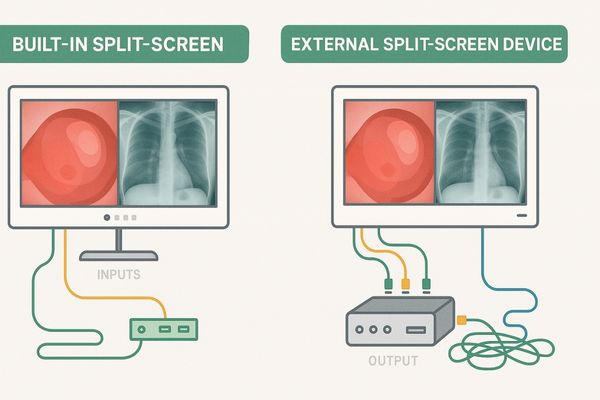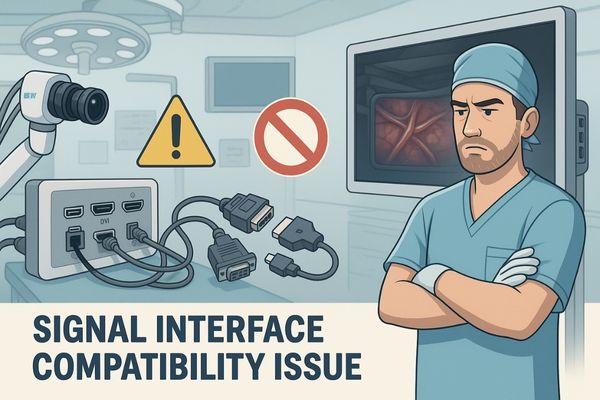
Top 10 Features of Surgical Monitors
The top 10 most critical features to evaluate in a surgical monitor are:
– High Resolution and Pixel Density

The top 10 most critical features to evaluate in a surgical monitor are:
– High Resolution and Pixel Density

Neither finish is universally better; the choice depends on the specific application. Anodizing excels in scratch resistance and chemical durability

The fundamental difference is integration. Built-in split-screen is processed internally by the monitor, reducing latency and clutter. External devices are

Signal interface compatibility is critical for successful surgical monitor integration. It directly impacts workflow efficiency, image quality, and overall system

Reshin monitors maintain 24/7 performance through industrial-grade components, advanced thermal management, long-life LED backlights, and real-time calibration. These features, validated

Yes, many eco-friendly materials can meet medical compliance standards, but not all. Biopolymers, recycled materials, and sustainably-sourced alternatives must still

Common visual artifacts in low-quality displays include color banding, motion blur, ghosting, and uneven brightness. These issues stem from inferior

For surgical monitors, physical buttons are generally better than capacitive touch controls in most operating room scenarios. Physical buttons provide

Different video interfaces have distinct resolution limits based on their bandwidth. HDMI 2.0 supports 4K at 60Hz, while HDMI 2.1
Choosing a medical monitor doesn’t have to be difficult. Tell us how and where you use it, and we’ll give you the most suitable options.
To provide the best experiences, we use technologies like cookies to store and/or access device information, Consenting to thesetechnologies will allow us to process data such as browsing behavior or unique lDs on this site, Not consenting or withdrawing consentmay adversely affect certain features and functions.
We will contact you within 1 working day, please pay attention to the email with the suffix “@reshinmonitors.com”.
We will contact you within 1 working day, please pay attention to the email with the suffix “@reshinmonitors.com”.